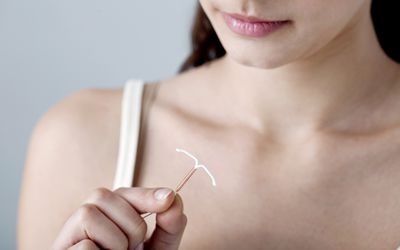Intrauterine devices (IUDs) are widely praised for being one of the most effective and low-maintenance forms of birth control available today. Once inserted, they can offer years of protection with little day-to-day attention. But like any medical device, they aren’t foolproof. While IUD failure is rare, it can happen—and when it does, your body may start dropping subtle (or not-so-subtle) clues.
Recognizing the early warning signs of a failed IUD is essential not only for your reproductive health but also for your peace of mind.
Recommended: How to Switch from the Pill to an IUD
In this post, we’ll walk you through the key symptoms that might signal something is wrong with your IUD, what those symptoms could mean, and what steps to take next if you suspect your IUD isn’t doing its job. Whether you’re experiencing unusual changes or just want to stay informed, this guide will help you listen to your body and act early.
Understanding IUD Failure: Is It Common?
IUDs are among the most reliable forms of birth control, with failure rates of less than 1%. However, while rare, IUD failure can still happen—and when it does, it may lead to unintended pregnancy or other complications.

There are a few key reasons why an IUD might fail:
- Expulsion: Sometimes the IUD can partially or completely slip out of the uterus, especially in the first year after insertion or after childbirth. When this happens, the device may no longer be effective.
- Displacement: The IUD might shift or become mispositioned inside the uterus, reducing its ability to prevent pregnancy.
- Perforation: In very rare cases, the IUD may perforate (poke through) the uterine wall during insertion, which can interfere with its placement and function.
- Insertion Error: If the IUD is not inserted correctly by a trained professional, its effectiveness can be compromised from the start.
Recommended: When is Tampon Use Safe After IUD Insertion, Compared to Cups?
Although the chances of failure are very low, it’s still important to know the early signs and symptoms that could indicate something is wrong. Early detection allows for quick action—whether it means getting the IUD repositioned, replaced, or removed altogether.
Key Early Symptoms That May Signal a Failed IUD
While IUDs are generally safe and effective, your body may alert you if something isn’t quite right. Recognizing these early symptoms can help you catch a problem before it becomes serious. Here are some warning signs that may indicate your IUD has failed, shifted, or been expelled:
1. Unexpected or Heavy Bleeding
If you experience sudden, heavy periods or spotting between periods—especially if this is a change from your usual cycle—it could be a sign that your IUD is not in the right place or not working as it should.
2. Missed Period or Pregnancy Symptoms
Missing your period, feeling nauseous, experiencing breast tenderness, or noticing fatigue may be signs of pregnancy. Since failed IUD can lead to pregnancy, these symptoms should not be ignored.
3. Pelvic Pain or Cramping
While mild cramping is normal after IUD insertion, ongoing or sharp pain in your lower abdomen or pelvis might signal that the device has moved or perforated the uterine wall.
4. Pain During Sex (Dyspareunia)
Pain during intercourse may mean the IUD has shifted or is irritating surrounding tissues. This could also be a sign of infection.
Recommended: Can Menstrual Cups Be Safely Used with Hormone-Based IUDs vs. Copper IUDs?
5. Changes in Vaginal Discharge
An increase in discharge, especially if it has a bad odor or unusual color, could indicate an infection, failed IUD or IUD displacement.
6. Can’t Feel the Strings or They Feel Different

You should be able to feel the IUD strings inside your vagina. If they feel longer, shorter, or are completely missing, the IUD may have moved or been expelled.
If you notice any of these symptoms, it’s important to contact your healthcare provider as soon as possible. Quick action can help prevent complications and ensure your contraceptive protection remains effective.
Warning Signs of IUD Displacement or Expulsion
An IUD can sometimes shift from its original position or even be pushed out of the uterus entirely—a situation known as displacement or expulsion. While this isn’t extremely common, it’s more likely to happen within the first year after insertion, especially during menstruation or in women who haven’t had children.
Here are the key signs your IUD may have moved or been expelled:
1. You Can’t Feel the Strings
After insertion, you should be able to feel the IUD strings at the top of your vagina. If you suddenly can’t feel them or they feel like they’ve retracted, the IUD might have shifted or been expelled.
2. Strings Feel Longer or Shorter Than Usual
If the strings feel longer, the IUD may have started to come out. If they feel shorter, the device could have shifted higher into the uterus—or possibly perforated the uterine wall.
Recommended: Is It True You’re Not Supposed to Use Menstrual Cups with IUDs?
3. You Feel the Plastic Tip of the IUD
You should only feel the strings, not the hard part of the IUD. Feeling the actual device means it has moved and is likely partially expelled.
4. Unusual Cramping or Sharp Pain
Mild cramping is normal for some time after insertion, but new or intense pain could be a sign the IUD is pressing against or poking into the uterine wall.
5. Heavy Bleeding or Spotting
Sudden heavy bleeding or spotting after months of stability could signal displacement or even expulsion, especially during your period.
6. Vaginal Discharge or Signs of Infection
A sudden increase in vaginal discharge, foul odor, or fever could indicate an infection—sometimes caused by a shifted or improperly placed IUD.
If you suspect your IUD has moved or fallen out, avoid having unprotected sex and see your healthcare provider immediately. An ultrasound or pelvic exam can confirm whether the device is still in place or needs to be reinserted or removed.
Possible Causes of IUD Failure
Although IUDs are over 99% effective, failures do happen in rare cases. Understanding the causes can help you stay aware and take action if needed. Here are the most common reasons an IUD might fail:
1. Improper Insertion
If the IUD isn’t placed correctly by a trained healthcare provider, it might not sit properly in the uterus—reducing its ability to prevent pregnancy from the start.
Recommended: Is the Copper IUD Better for Heavy Periods?
2. Partial or Complete Expulsion

Sometimes, the uterus pushes the IUD out (especially within the first year). This can happen without you even noticing, especially during a heavy period.
3. Uterine Abnormalities
Women with an unusually shaped or scarred uterus (from fibroids, previous surgeries, etc.) may be at higher risk of IUD movement, reducing its effectiveness.
4. The IUD Moves or Shifts Over Time
Even if inserted correctly, an IUD may slowly shift or tilt over time. This movement can reduce how well it works or cause discomfort and complications.
5. Perforation of the Uterus
In very rare cases, especially during insertion, the IUD may puncture the uterine wall (called perforation), rendering it ineffective and possibly dangerous.
6. Expired IUD
Every IUD has a limited lifespan (usually 3 to 10 years, depending on the type). Using one past its expiration can reduce protection and increase risk of failure.
7. Hormonal Interference (For Hormonal IUDs)
Certain medications or health conditions may interfere with hormone levels, potentially lowering the effectiveness of hormonal IUDs like Mirena or Skyla.
Understanding these potential causes can empower you to take preventive steps—like attending follow-up visits, checking your IUD strings regularly, and recognizing symptoms early.
Preventing IUD Complications and Failures
While IUDs are one of the most reliable forms of birth control, a little awareness and regular care can go a long way in making sure they stay effective and complication-free. Here’s how to reduce your risk of IUD failure or problems:
1. Schedule Follow-Up Appointments
After insertion, your doctor may ask you to come back in a few weeks to make sure the IUD is properly positioned. Don’t skip this appointment—early checks can catch issues before they cause complications.
Recommended: Should I Inform My Doctor if My IUD Was Dislodged Even if I’m Not Sexually Active?
2. Learn How to Check Your Strings
You don’t have to do this daily, but checking your IUD strings once a month (preferably after your period) helps you know if the device has moved or fallen out.
3. Monitor Your Body for Changes
Unusual cramping, changes in bleeding, or new pain during sex can be early signs of displacement or failure. Listening to your body is key.
4. Use Pads Instead of Tampons (Right After Insertion)

For the first few weeks after getting your IUD, using pads instead of tampons may reduce the risk of accidental dislodgement—especially if you’re still adjusting to the new device.
5. Report Any Unusual Symptoms Early
Don’t wait. If something feels off—like pain, heavy bleeding, strange discharge, or signs of pregnancy—contact your healthcare provider immediately.
6. Know Your IUD’s Expiration Date
All IUDs have a lifespan (usually between 3 to 10 years). Set a reminder so you know when it’s time for removal or replacement.
Recommended: What Happens If You Take Expired Birth Control Pills?
7. Keep Open Communication With Your Doctor
Ask questions. Be honest about your symptoms. The more your provider knows, the better they can help you stay safe and protected.
Taking these small but smart steps can give you peace of mind and help your IUD do its job—protecting your health and preventing unplanned pregnancy.
Conclusion
IUDs are a powerful and low-maintenance birth control option, but like any method, they come with the possibility—however small—of complications or failure. Knowing the early warning signs, checking your strings, and listening to your body can make all the difference.
If something feels off, trust your instincts and talk to your healthcare provider. Taking quick action can help prevent serious issues and keep you in control of your reproductive health. Remember, being informed isn’t just smart—it’s empowering.
